Note from Middle-earth News: As announced on Tolkien Reading Day, Oloris Publishing is giving Middle-earth News Readers a SPECIAL DISCOUNT of 20% on anything in the shop, until April 15, 2017! Enter the code FELLOWSHIP17 to get your discount!
Food is an integral and vivid part of The Hobbit and The Lord of the Rings. Astrid Tuttle Winegar’s new cookbook, Cooking for Halflings and Monsters: 111 Comfy, Cozy Recipes for Fantasy-Loving Souls, offers an inspired collection of recipes to satisfy any halfling, monster, elf, dwarf, or wizard. Middle-earth News Assistant Director Valdís Longbeard had the opportunity to ask the author about her book in the following interview.
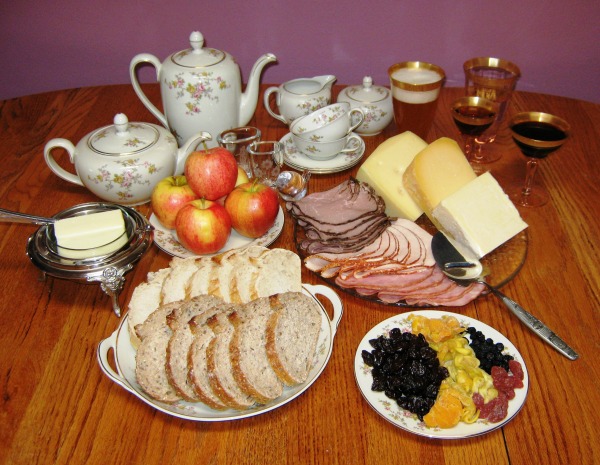
A Typical Fantasy Meal. Photo credit: Astrid Tuttle Winegar.
Valdís: What inspired you to do a Tolkien/Middle-earth themed cookbook?
Astrid: I’ve been a fan of Tolkien since I was a teenager. In college, I was always trying to integrate Tolkien studies into my course work. Fortunately, I found a professor, Dr. Leslie Donovan, who was offering a class. We all had to do a final project, so I made up a small cookbook, consisting of about 15 recipes. After I finished my masters, I was sort of adrift. Dr. Donovan suggested I try to expand the project and find a publisher. This set me on a “publishing quest” which finally led to Oloris Publishing. That quest was sometimes tragic, sometimes crazy, sometimes annoying, and always involved over-eating.
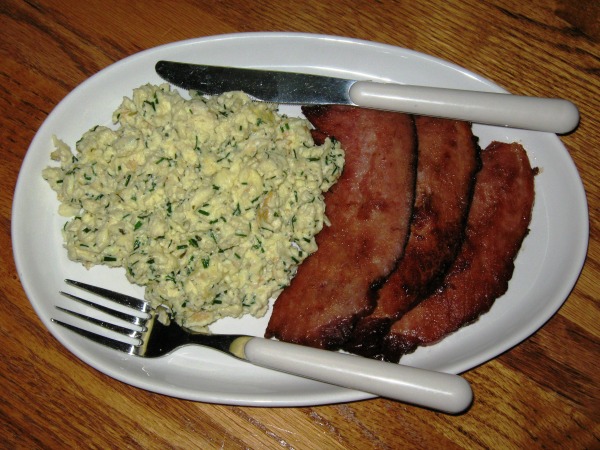
Snorri’s Special Ham and Eggs. Photo credit: Astrid Tuttle Winegar.
Valdís: I’m intrigued by the title! It’s very evocative. Why “Halflings and Monsters”?
Astrid: The work was originally entitled “Astrid’s Modern Hobbit Recipes.” I found an agent and publisher. The work was announced in December 2011…and then an entity called “The Tolkien Estate” heard about it. Yada, yada, yada; lost publisher, agent, title, and pretty much all concepts within the cookbook. So, I needed to find a new title that wouldn’t be subject to litigation. “Monsters” was a no-brainer, since The Estate can’t possibly own that word and I had lots of recipes specifically designed for orcs and trolls. I even had a cake specially designed for Shelob and a few recipes for Gollum. Finding a new word to represent “hobbit” led me to settle on “halfling.” This seemed a common word in the Dungeons and Dragons world and I also noticed the term used freely in other miscellaneous works.
On a more philosophical note, the new title reflects all of the halflings and monsters in my life; they are both endearing and exasperating at times. Sometimes they are both at the same time. I have some halfling grandchildren who are dear to me, but sometimes they act a little bit like monsters. Sometimes a spouse or partner can represent your better half, and they can also help you tame your own inner monsters.
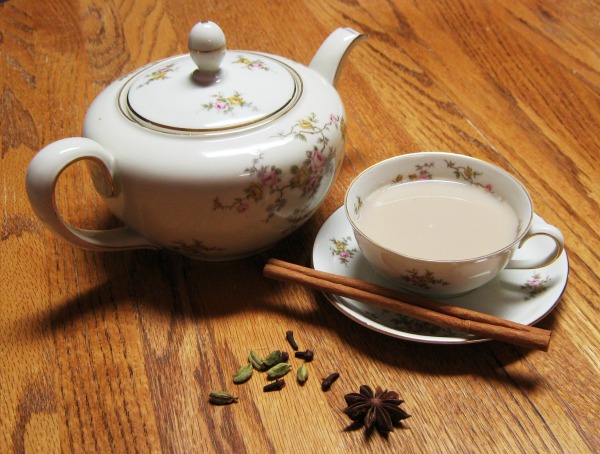
Comforting Chai. Photo credit: Astrid Tuttle Winegar.
Valdís: How did you approach creating recipes so that they felt consistent with the theme of the cookbook?
Astrid: When I first planned the cookbook, I delved into Middle-earth for the millionth time and took note of every single food or drink item mentioned by Tolkien. People often seem to assume all they do in Middle-earth is eat and drink beer, but when you read the books, these instances are rarer than you might think. And water is truly the most popular beverage in Middle-earth. I simply started out with specific instances of foods, such as The Mighty Bacon Mushroom Dish (renamed as Hild’s Mushroom Bacon Dish of Might) and Of Herbs and Stewed Rabbit (aka Sam’s Dream). This particular dish is now called Rabbit Braised with Herbs (aka A Halfling Hero’s Dream). I started with the most obvious named items (take a look at the dwarf invasion of Bag-End), read up on some British food history, and filled in the blanks using ingredients mentioned in the texts.
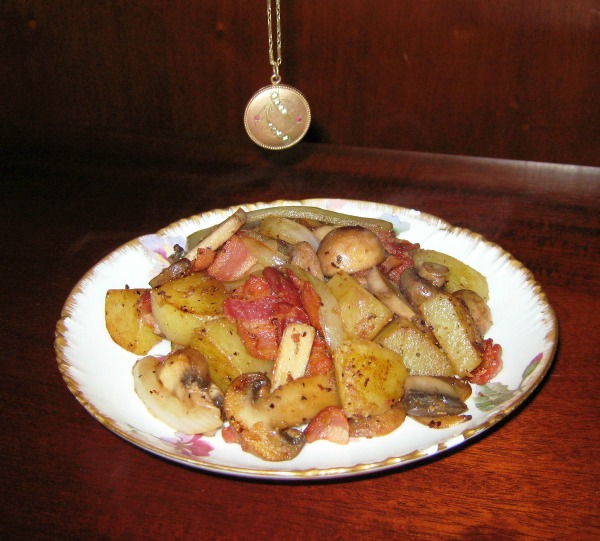
Hild’s Mushroom Bacon Dish of Might. Photo credit: Astrid Tuttle Winegar.
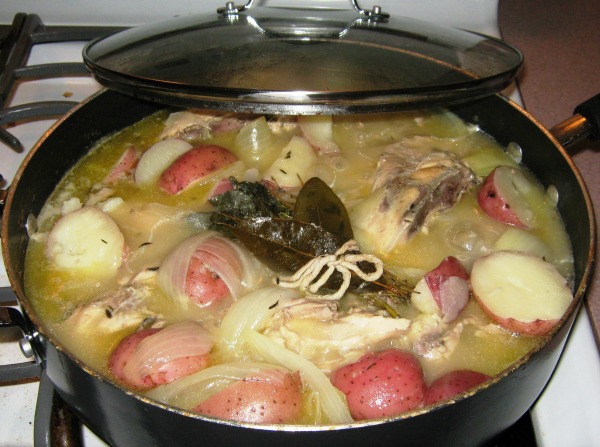
Rabbit Braised with Herbs. Photo credit: Astrid Tuttle Winegar.
Valdís: I love the organization and clever chapter titles in the cookbook! How did you arrive at that idea for arranging the recipes? Did you start with the locations, or with the recipes?
Astrid: Thank you! At first, the cookbook literally followed the text of ‘The Hobbit’ and ‘The Lord of the Rings.’ Most recipes were named after characters, places, or situations that happened in the texts. The re-write was problematic until I came up with the idea of having a restaurant represent each of the main groups of fantasy characters. Then everything sailed more smoothly and it just seemed logical to make Halfling Hideaway the first chapter; so, for the new book, I started with locations. Many of the recipes had to be distributed to different chapters. In the original cookbook, I had a chapter called “Frodo’s Favorites” which consisted of 11 mushroom recipes. When I could no longer use the name Frodo, I had to eliminate that entire chapter. Most of the recipes ended up in my dwarf chapter, which oddly enough, was a chapter that didn’t exist in the original cookbook. I had dwarf recipes tucked into a chapter called “Tea-Time” where I envisioned all of the surviving dwarves heading over to Bilbo’s house for a party; if you’ll remember, he said “tea is at four.”

Gundurnubs’ Grub. Photo credit: Astrid Tuttle Winegar.
Valdís: What would you consider to be some of the culinary “hallmarks” of the different peoples of Middle-earth (hobbits, elves, dwarves, men, orcs)?
Astrid: Halflings, of course, love their bacon, mushrooms, fresh herbs, and plenty of fruits and vegetables. I think men favor these items as well. I’ve got my dwarves tending to go for more root-y vegetables, but they also like bacon and mushrooms—they like hearty dishes to help them prepare for battle. My elf recipes tend to be more delicate. Orcs prefer raw meat and would probably never consume fruits and/or vegetables if they can help it. However, my monster chapter has some of the best recipes in the whole cookbook. I also made up a wizard’s chapter, which is filled with more complicated recipes (including two newly developed Narnian recipes). Wizards like to fuss with foods, but it also better taste good.
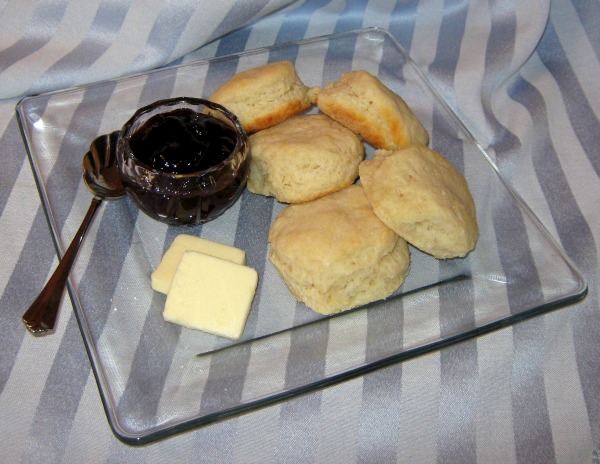
Head in the Clouds Biscuits. Photo credit: Astrid Tuttle Winegar.
Valdís: Do you have a favorite recipe (or recipes) from the book?
Astrid: This seems to change everyday, depending on my mood. If I were going to cook something for dinner tonight from my cookbook, I would love to have…Gundurnub’s Grub. This is a simple shrimpy, garlicky, wine-y dish with a saffron rice accompaniment. BUTTER is important in Middle-earth. I would serve some salad on the side. Then I would whip up some of Richard’s Orange Biscuits (formerly named Bag-End Biscuits; now named for my late father). Is anything like this happening in my kitchen tonight? Nope. Maybe next week, I’ll get all that together.
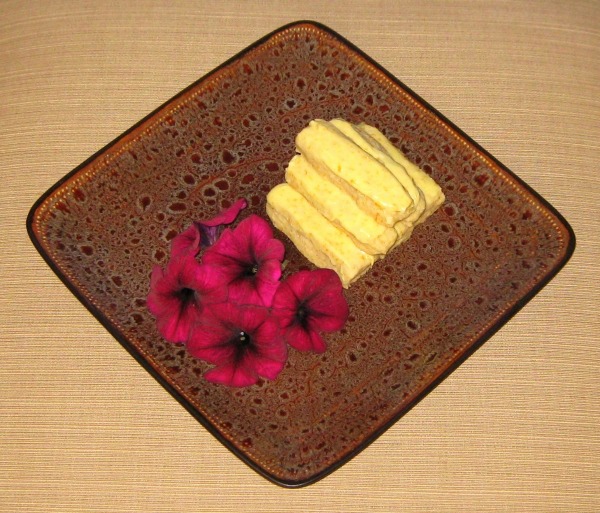
Richard’s Orange Biscuits. Photo credit: Astrid Tuttle Winegar.
Valdís: Do you often host Middle-earth themed parties or get-togethers? Do you have any recommendations for people who would like to have parties like that?
Astrid: My husband and I are the king and queen of Introvert Land, but now that I have new little ones around, I plan to expose them to the world of Middle-earth as soon as I can. My cookbook has a whole section on menu suggestions, as well as a plan to build an entire fantasy feast that requires no cooking at all. You can make it a potluck and invite all your cosplaying friends to bring various items. If you are interested in a Second Breakfast, you might whip up Snorri’s Special Ham & Eggs and some Head-in-the-Cloud Biscuits, and supply plenty of butter, jams, and honey for spreading. If you are planning a reading of The Hobbit, I would suggest whipping up a batch of Comforting Chai and some Bon Voyage Biscotti.
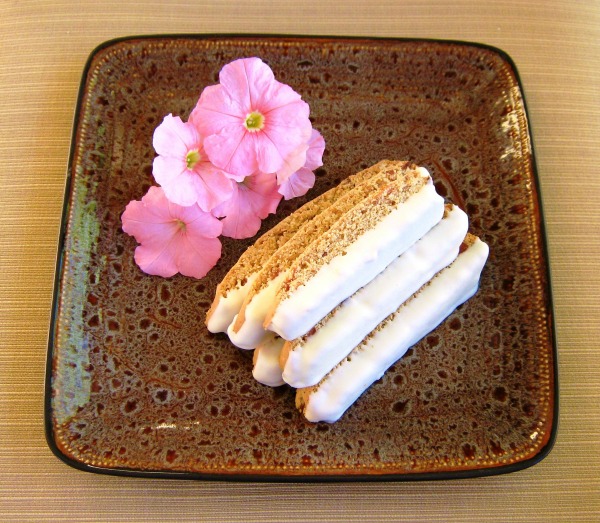
Bon Voyage Biscotti. Photo credit: Astrid Tuttle Winegar.
Valdís: Do you have any suggestions for how folks can begin to do fantasy-themed cookery, besides using your book?
Astrid: I believe lots of fantasy-themed cookery is often simply home cooking; it should taste good to you and give you comfort. It shouldn’t have to mimic what you see in a movie and it shouldn’t have to use strange or unhealthy ingredients. So, the best way to begin is simply to start cooking at home. Start with easy recipes so you won’t feel overwhelmed. Go to the store and pick out your ingredients; don’t order them. Get the family involved, then sit down and share your creations together. And if you’re alone, it’s okay to spend some time making something special for yourself. You deserve it.
Thank you, Astrid, for your time and thoughtful answers to our questions! I can’t wait to dig into the recipes! Or, more importantly, the food!


